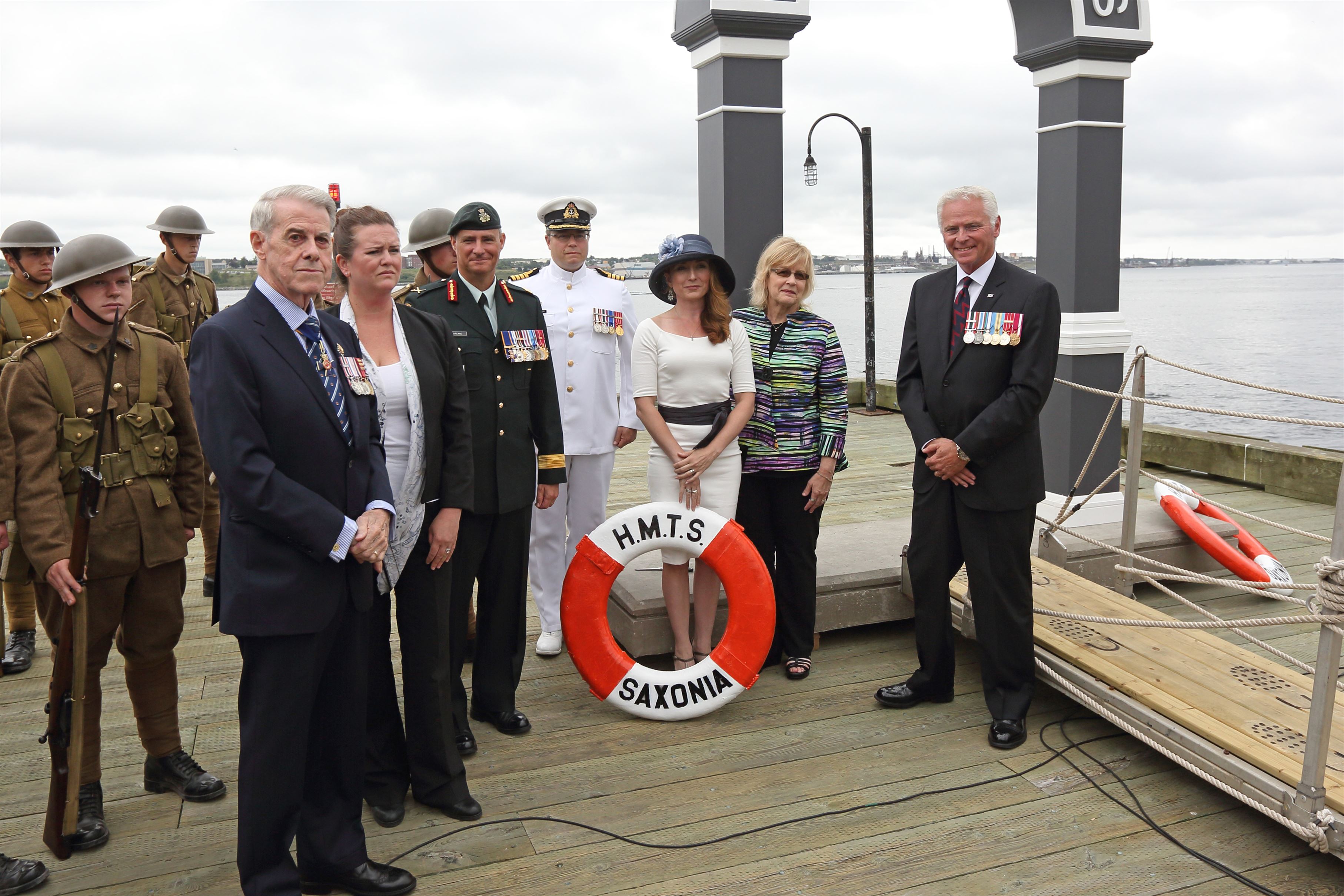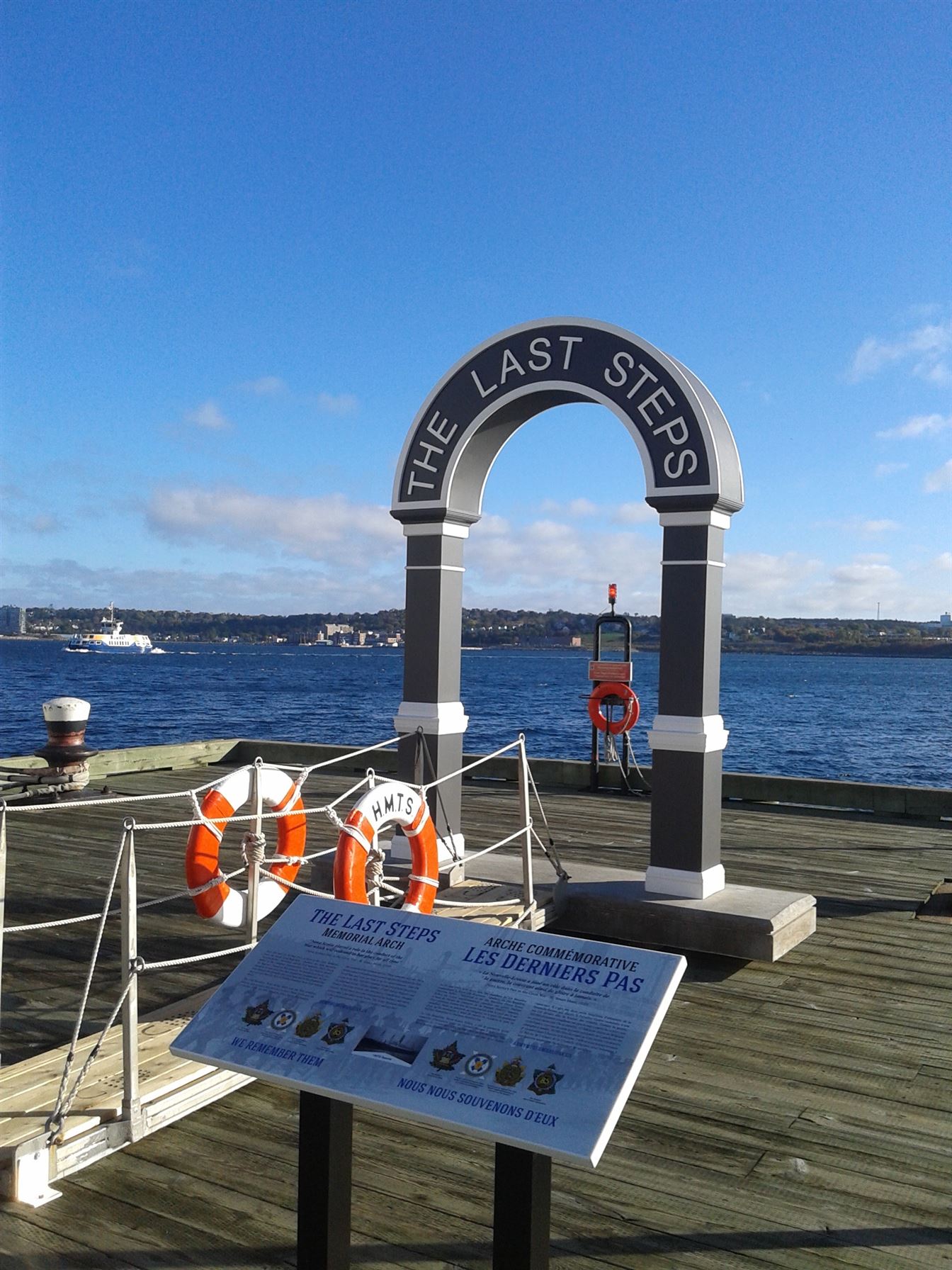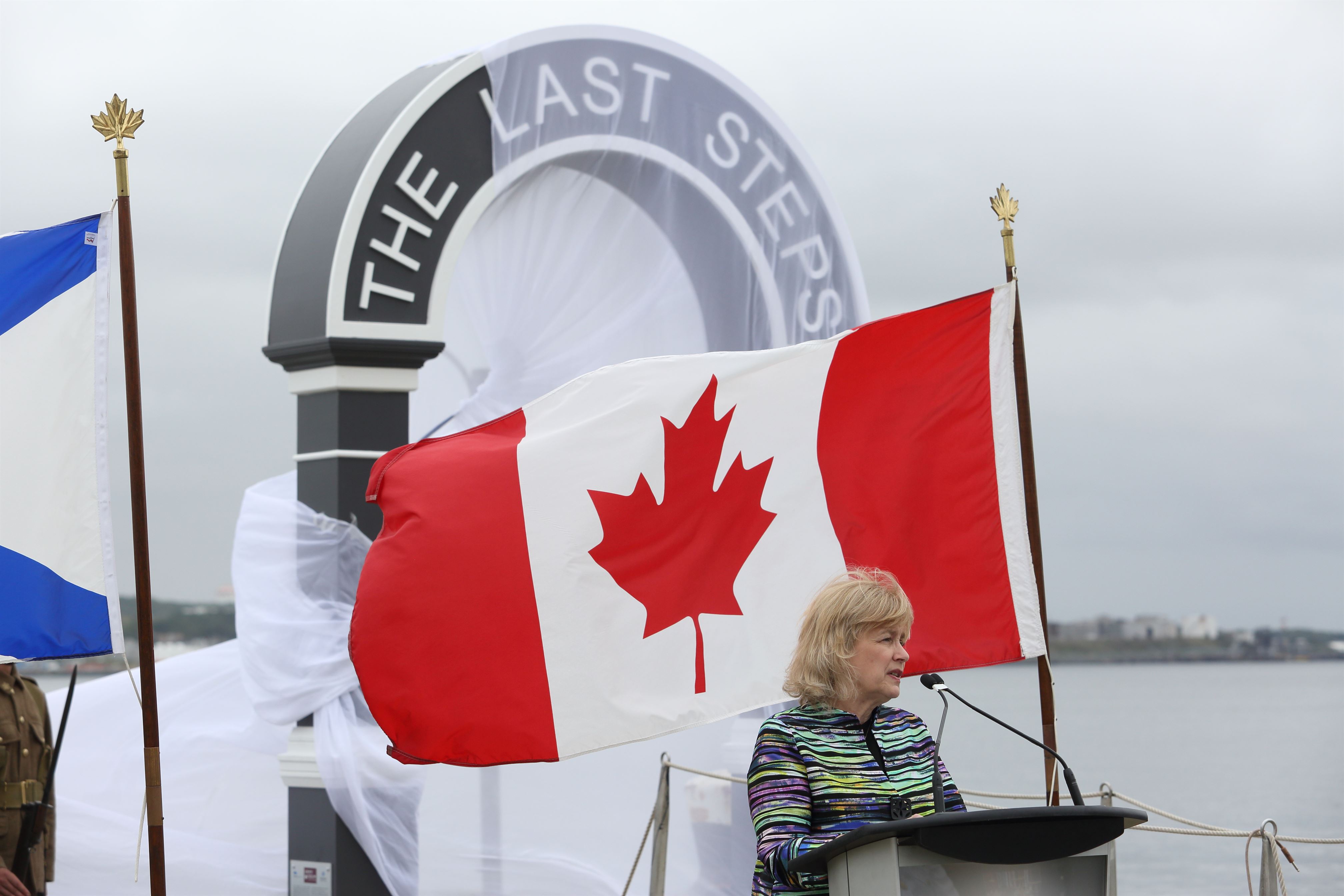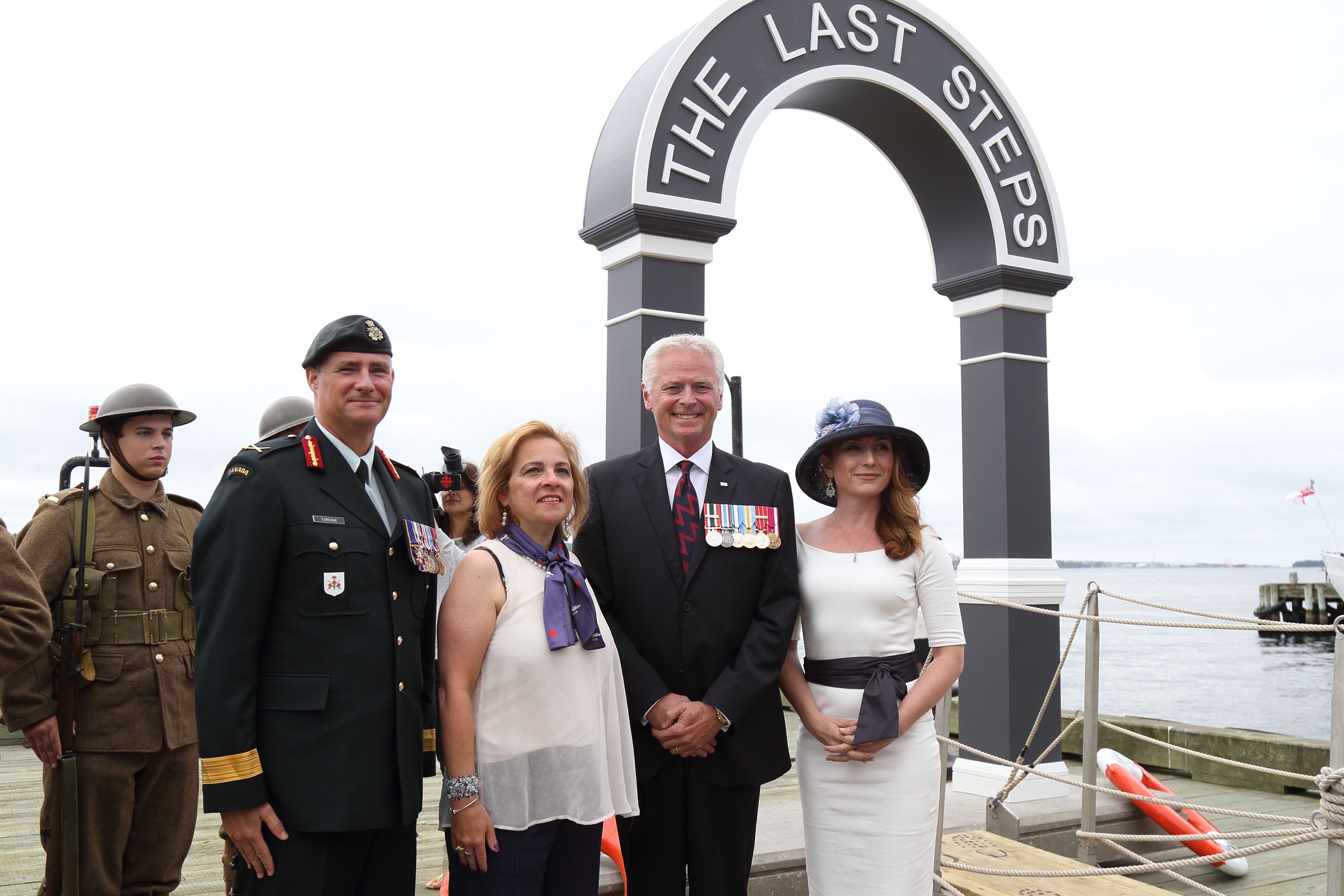L’arche commémorative Les derniers pas
Ville/Province : Halifax, NS
Numéro du monument : 12004-218
Type : Arche
Adresse : 1675, rue Lower Water
Lieu : Musée maritime de l’Atlantique Pier
Coordonnées GPS : Lat: 44.6478753 Long: -63.5696257
L’arche commémorative Les derniers pas a été dévoilée le vendredi 26 août 2016 sur une jetée située à l’arrière du Musée maritime de l’Atlantique. Le front de mer d’Halifax se trouve là où des milliers de Canadiens et de Canadiennes ont fait leurs derniers pas pour embarquer sur les navires en direction de l’Europe pendant la Première Guerre mondiale. Environ 350 000 Canadiens et Canadiennes se sont embarqués sur des navires à Halifax pour se rendre à l’étranger. Environ 60 000 d’entre eux ne sont jamais revenus.
Corinne MacLellan a conçu le monument commémoratif en collaboration avec Ken Hynes, ancien major à la retraite et conservateur bénévole au Musée de l’Armée de la Citadelle d’Halifax. Les deux coéquipiers ont reçu des conseils, des autorisations et des subventions de la part, entre autres, de la Halifax Waterfront Development, de l’APECA, d’Anciens Combattants Canada, de la Halifax Foundation, du musée maritime, de la Ville et de Parcs Canada. L’artiste Nancy Keating, qui a conçu l’arche de la victoire et une passerelle, avait dévoilé les plans de conception du monument le 20 mai 2015.
Le monument commémoratif a été réaménagé par Coastal Woodworkers et a été repositionné le 7 juin 2022.
Inscription sur le mémorial
The Last Steps Memorial Arch
“Nova Scotia played a role in the conduct of the War which will redound to her glory for all time”
(Nova Scotia’s Part in the Great War - M. Stuart Hunt, 1920)
Near this spot, on 20 May 1915, soldiers of the 22nd Battalion (now the Royal 22nd Regiment - Quebec), the 24th Battalion (Victoria Rifles – Montreal), and the 25th Battalion (Nova Scotia Rifles) of the Canadian Expeditionary Force left Halifax aboard His Majesty’s Transport Ship Saxonia. For hundreds of them, this would be the last time that they stepped on Canadian soil. We can only imagine the thoughts they may have had as they boarded the ship and watched the Port of Halifax disappear from view behind them.
The 25th Battalion, Nova Scotia Rifles was the first complete infantry unit raised in this province to leave Nova Scotia and, on 12 October 1916, the 85th Battalion, Nova Scotia Highlanders also embarked for overseas service. These were the only two Nova Scotia infantry battalions that stayed together throughout the First World War and were not broken up for reinforcements. Over the course of the War, 350,000 Canadian troops sailed from this port to an uncertain future. Of that number, 67,000 died in Belgium and France. The lives of those who returned to Canada were changed forever. 30,000 Nova Scotians volunteered for military and naval service and 3,400 didn’t come home. The Army Museum Halifax Citadel commemorates their legacy of service and sacrifice. www.armymuseumhalifax.ca
WE REMEMBER THEM
There is also an acknowledgement panel that says:
This memorial was made possible through the dedicated partnership of many community organizations. The design for the arch was created by Halifax artist, Nancy Keating, whose Great Uncle, Major A.W.P. Keating, served in the 25th Battalion, Nova Scotia Rifles. The project was led by Governor Corinne MacLellan and Curator Ken Hynes of the Army Museum Halifax Citadel
Vue sur la rue
Les cartes pourraient être disponibles en anglais seulement.
Note
Ces renseignements sont fournis par des collaborateurs. Anciens Combattants Canada fournit ces renseignements à titre de service au public. Anciens Combattants Canada ne peut garantir l’exactitude, la fiabilité ou l’actualité du contenu.
- Date de modification :



